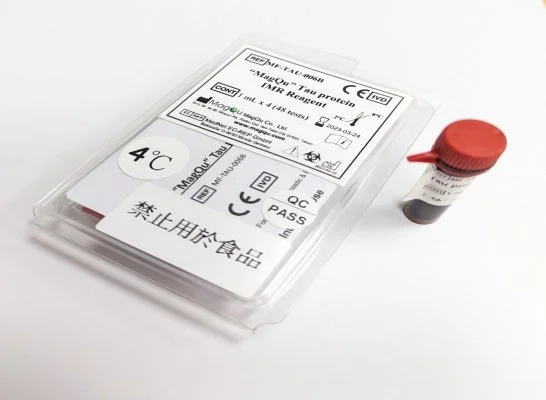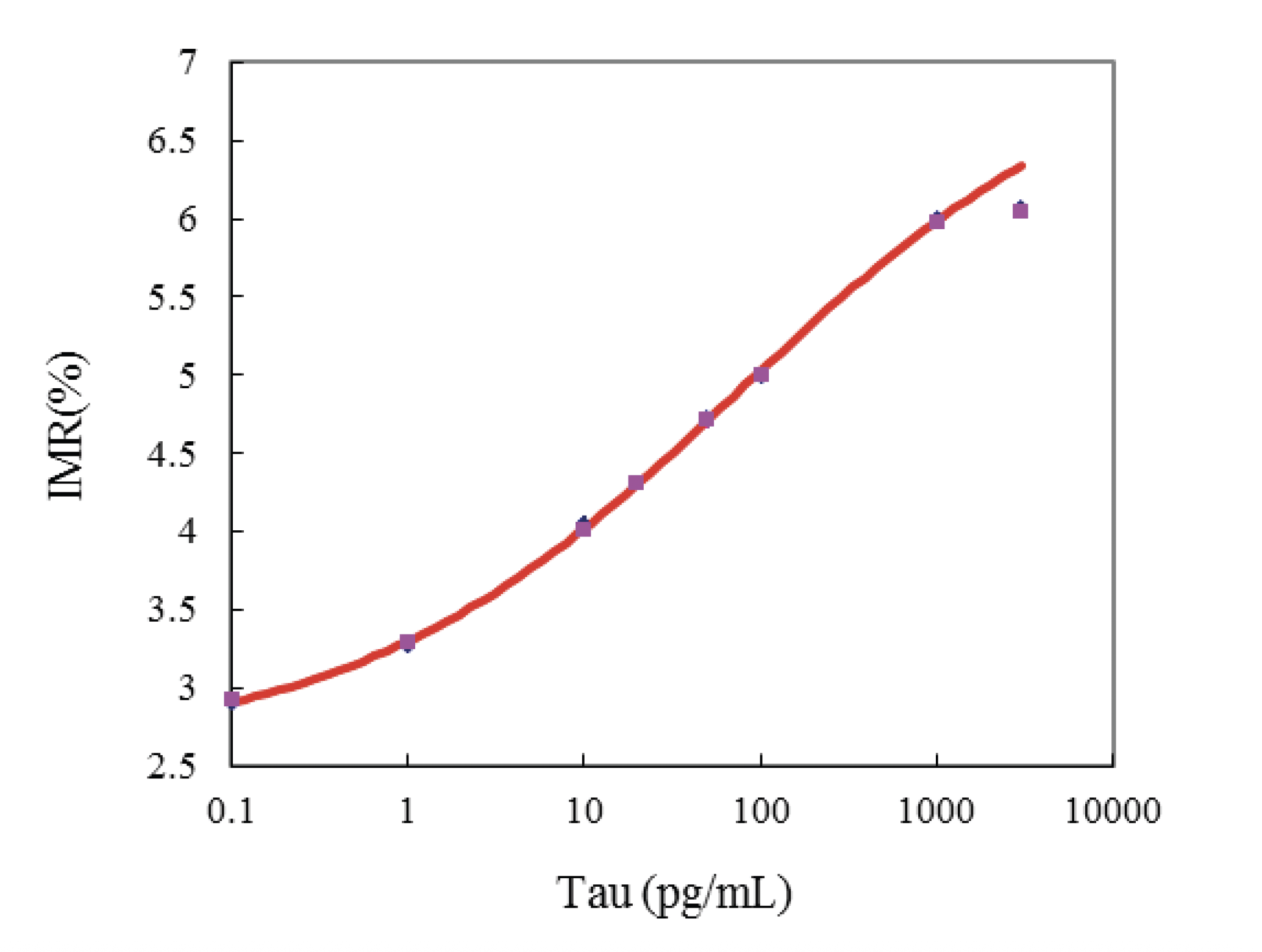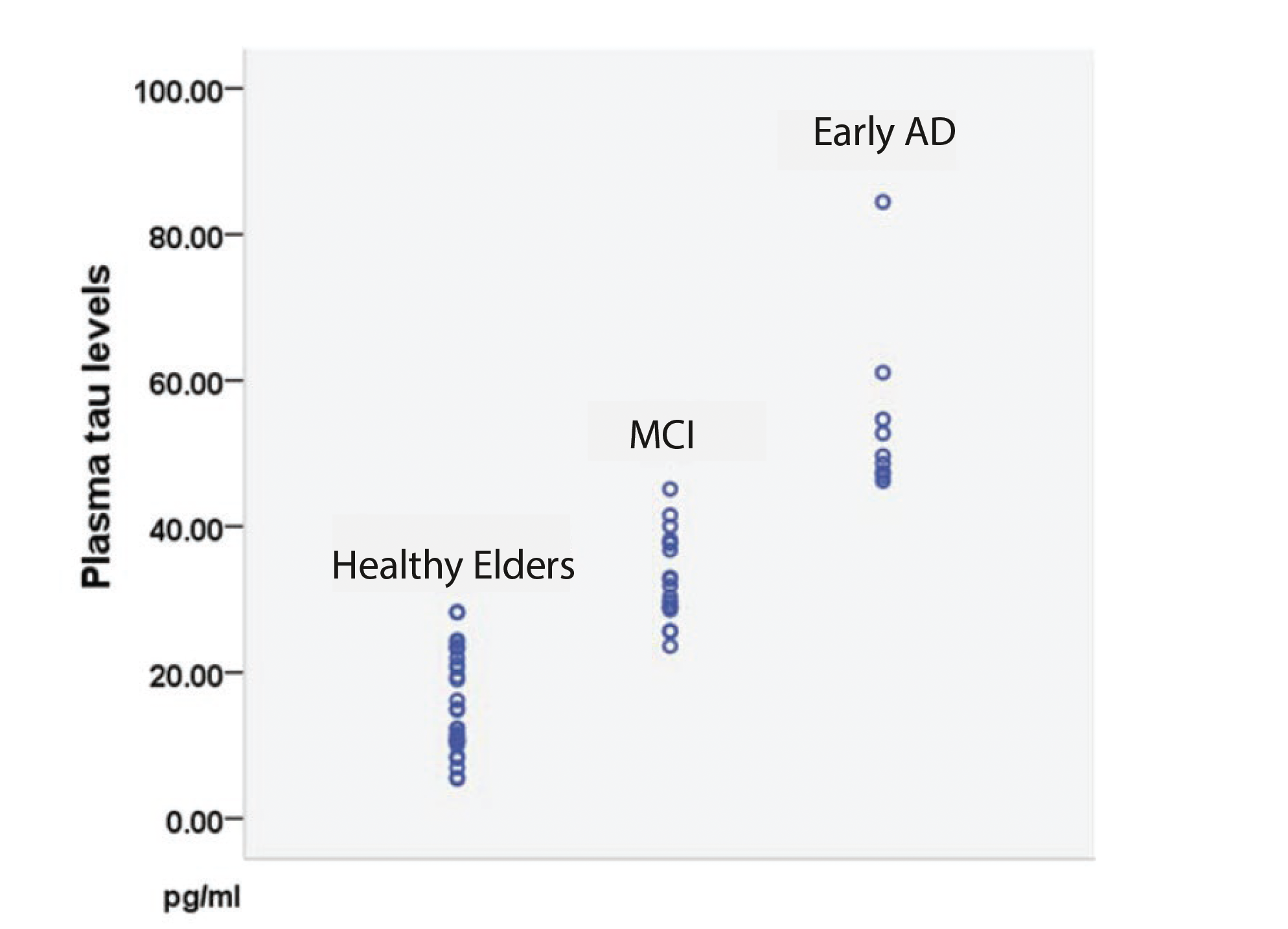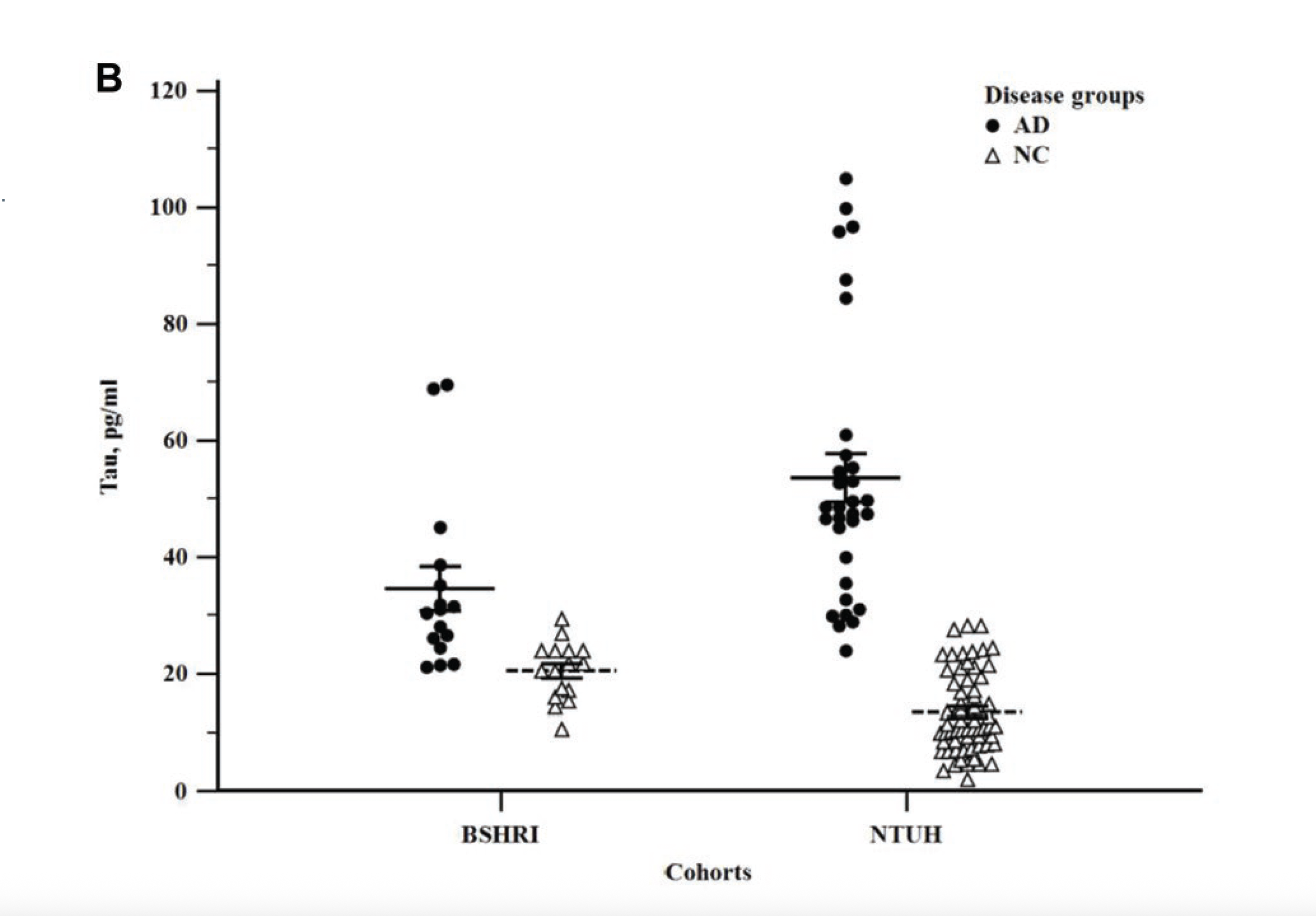Tau Protein IMR Reagent
“MagQu” Tau protein IMR Reagent is designed for quantitative measurement of Tau protein concentration in human plasma by immunomagnetic reduction (IMR) assay. The reagent can be used with MagQu’s Magnetic Immunoassay Analyzer XacPro-S system.
This assay enables early-stage neurological disease research with ultra-high sensitivity and low interference.
Features
Ultra sensitivity
Low interference
Easy operation
Diagnosis of neurological disease
Specifications
Sample type: Human Plasma
Sample volume: 40 μl
Assay time: 5 hours (36 channels in XacPro-S)
Use application: In vitro diagnostic
Detection methods: ImmunoMagnetic Reduction (by analyzer XacPro-S with magnetic reagents)
Sensitivity
Detection Range: 1 - 100 pg/ml
Low detection limit: 35 fg/ml
IMR standard curve of Tau Protein
Description
Intended Use
“MagQu” Tau protein IMR Reagent is used to quantitatively measure Tau protein in human fluid specimen, such as plasma.
Use “MagQu” Tau protein IMR Reagent only with the XacPro-S System (MagQu Co., Ltd.).
Introduction
Tau protein is a microtubule-associated protein and is abundant in nervous system. Tau protein can maintain the structure of neuron cells and support the transport of substance. When tau proteins become defective, It will result in the self-assembly of tangles in brain and increased some neurodegenerative diseasesincluding Alzheimer’s disease (AD)、Pick's disease、Parkinson's disease (PD)、Progressive supranuclear palsy(PSP) and Corticobasal degeneration (CBD).1,2
Principles of Test
“MagQu” Tau protein IMR Reagent is designed for rapid quantifying Tau protein by Immuno Magnetic Reduction (IMR). We conjugated the antibody on the surface of around 50 nm-in-diameter Fe3O4 magnetic particles. When the antibodies on the surface bind with Tau protein, the magnetic particles form clusters. Therefore, the ac susceptibility (Xac) of magnetic particles would be reduced in the adding ac magnetic field. By measuring the reduction of Xac, we can quantify Tau protein in the sample easily, rapidly, and accurately.3
Reagent Properties
Precision
The Tau protein samples were measured in duplicate,
twice per day over 20 days. Two different Tau protein concentrations were used for the tests.
The standard deviations of repeatability and within-lab for various Tau protein concentrations ware obtained.
Interference (Specificity)
Plasma can contain interfering substances such as hemoglobin, bilirubin, or intra lipid because of common diseases, such as hemolysis, jaundice or hypertriglyceri-demia.
Other bio-substances that exist naturally in plasma, such as uric acid, rheumatoid factor, or albumin, are also interfering substances.
Other interfering substances include drugs or chemicals in medicine that is used to treat inflammatory diseases, viral and bacterial infections, cancers and cardiovascular
disease. The level of Tau protein in each of these pools was then determined and normalized to the level without the respective substances.
Expected Value
Fig 1: The plasma tau levels of different groups of subjects. (refer to reference 1)
Fig 2: Scatter plots of plasma tau levels in the Banner Sun Health Research Institute (BSHRI) and National Taiwan University Hospital (NTUH) (refer to reference 2)
Application References:
1. Chiu Ming-Jang et al., “New Assay for Old Markers-Plasma Beta Amyloid of Mild Cognitive Impairment and Alzheimer’s Disease” Current Alzheimer Research. 2012; 9: 1142.
2. Chiu Ming-Jang et al., “Combined plasma biomarkers for diagnosing mild cognition impairment and Alzheimer's disease” ACS chemical neuroscience. 2013; 4:1530.






